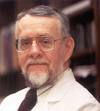EmpowHer:
Doctor, talk with us about the connection then between vitamin D, calcium, and osteoporosis.
Dr. Heaney:
Well, there are lots of connections. First of all, bones are made up of calcium, protein, and phosphate. Calcium is the principal mineral and it is one that is most likely to be in short supply in a typical diet, so we focused on calcium but it is important to emphasize that it is not just calcium. Most women are not getting an adequate calcium intake. I think fewer than 15 percent of women from adolescence to death are getting anything close to the recommended dietary intake of calcium today. The surgeon general, in his report on bone health and osteoporosis published two to three years ago, stated that the calcium was singled out for special attention because it was critical for bone health and because the American public intake is far short of the recommended level. So we do focus on calcium and I think it is obvious that you can not accumulate the required calcium if you do not have enough in the diet. Secondly, vitamin D comes into the picture in interesting ways. Vitamin D is necessary for calcium to be absorbed efficiently from the food we eat, and in the absence of vitamin D we can not do that so that is vital. Vitamin D also plays additional roles that we are just beginning to understand and in fact these new roles of vitamin D may be more important than the old ones that we had taken for granted
EmpowHer:
Is vitamin D like a facilitator of the calcium?
Dr. Heaney:
It does facilitate the active absorption of calcium from the food into the blood stream, and it also facilitates many other body responses to all kinds of signals. For example, people who do not have adequate vitamin D level tend to fall more. They have poor lower extremity coordination. They can not get out of chairs easily; they can not walk as quickly, they do not have a good balance, etcetera. One of the reasons why older individuals are more prone to fracture is because they have a vitamin D deficiency that makes them clumsier, which is easily fixed within a few weeks by starting adequate vitamin D supplementation. This plays a role in the osteoporosis story because we cannot break our bones unless we fall. The injury or trauma that you and I would sustain if we trip and fall might result in bruising or scraping our knees, but we would not expect to break something where the osteoporotic person does. So if you are not falling you are going to be much less likely to break anything. Vitamin D is playing a whole host of other roles as well, but less important for bone health and more important for resistance to infection, for protection against cancer, and for many other vital body functions.
MORE ON DR. ROBERT HEANEY
Dr. Robert Heaney is from Creighton University Osteoporosis Research Center is internationally recognized in the field of bone, biology, and
calcium nutrition. Visit Dr. Heaney on the web at Creighton University at http://osteoporosis.creighton.edu/bio_faculty/dr_heaney.htm


